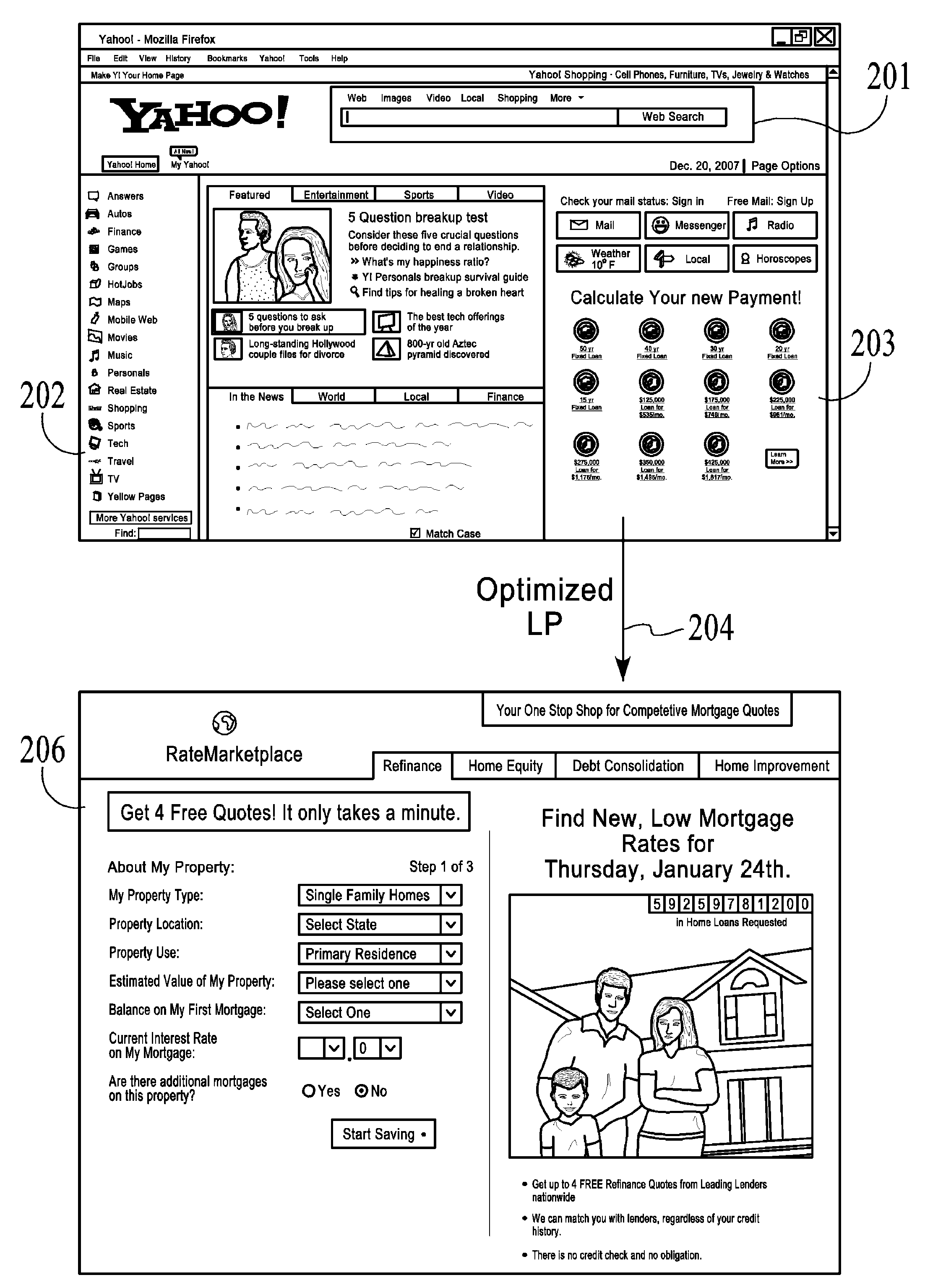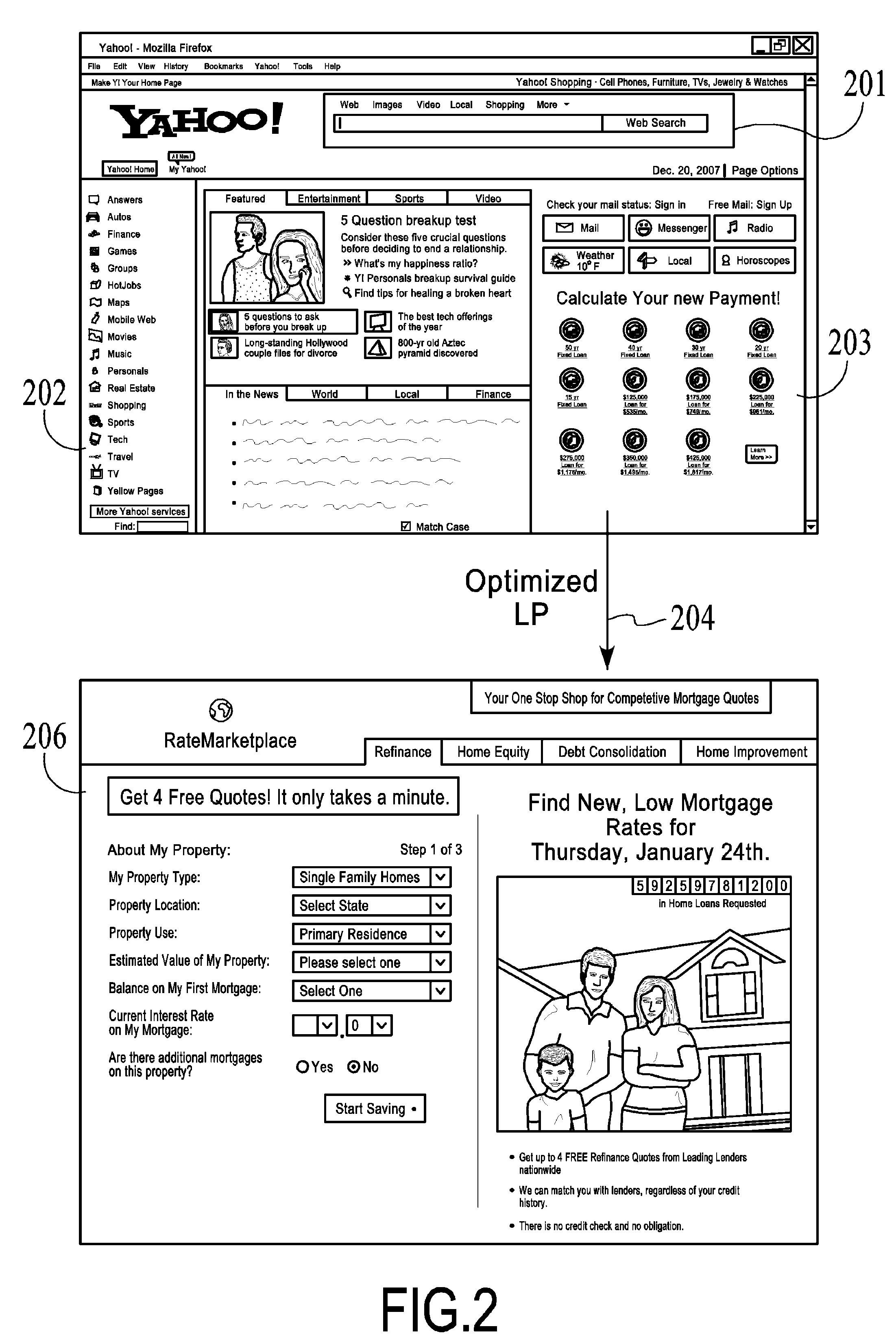Web page server process using visitor context and page features to select optimized web pages for display
a web page server and visitor context technology, applied in the field of information systems, can solve the problems of inefficiency, inability to optimize web pages for all topics or products, and the practical limit of the number of combinations and variables in a test is the amount of time it will take, so as to facilitate real-time decision making and improve performan
- Summary
- Abstract
- Description
- Claims
- Application Information
AI Technical Summary
Benefits of technology
Problems solved by technology
Method used
Image
Examples
Embodiment Construction
In the following description, numerous specific details are introduced to provide a thorough understanding of, and enabling description for, embodiments of the web page optimization method. One skilled in the relevant art, however, will recognize that these embodiments can be practiced without one or more of the specific details, or with other components, systems, etc. In other instances, well-known structures or operations are not shown, or are not described in detail, to avoid obscuring aspects of the disclosed embodiments.
For purposes of the following description, the web page that is served to the visitor may be a landing page that is accessed through one or more intermediate websites, or it may be a web page that is accessed directly on a target website by the visitor. Unless otherwise stated, it should be understood that the term “web page” or “landing page” may represent an entire web page, or a portion of a web page displayed on the visitor client computer. Likewise, it may ...
PUM
 Login to View More
Login to View More Abstract
Description
Claims
Application Information
 Login to View More
Login to View More - R&D
- Intellectual Property
- Life Sciences
- Materials
- Tech Scout
- Unparalleled Data Quality
- Higher Quality Content
- 60% Fewer Hallucinations
Browse by: Latest US Patents, China's latest patents, Technical Efficacy Thesaurus, Application Domain, Technology Topic, Popular Technical Reports.
© 2025 PatSnap. All rights reserved.Legal|Privacy policy|Modern Slavery Act Transparency Statement|Sitemap|About US| Contact US: help@patsnap.com



